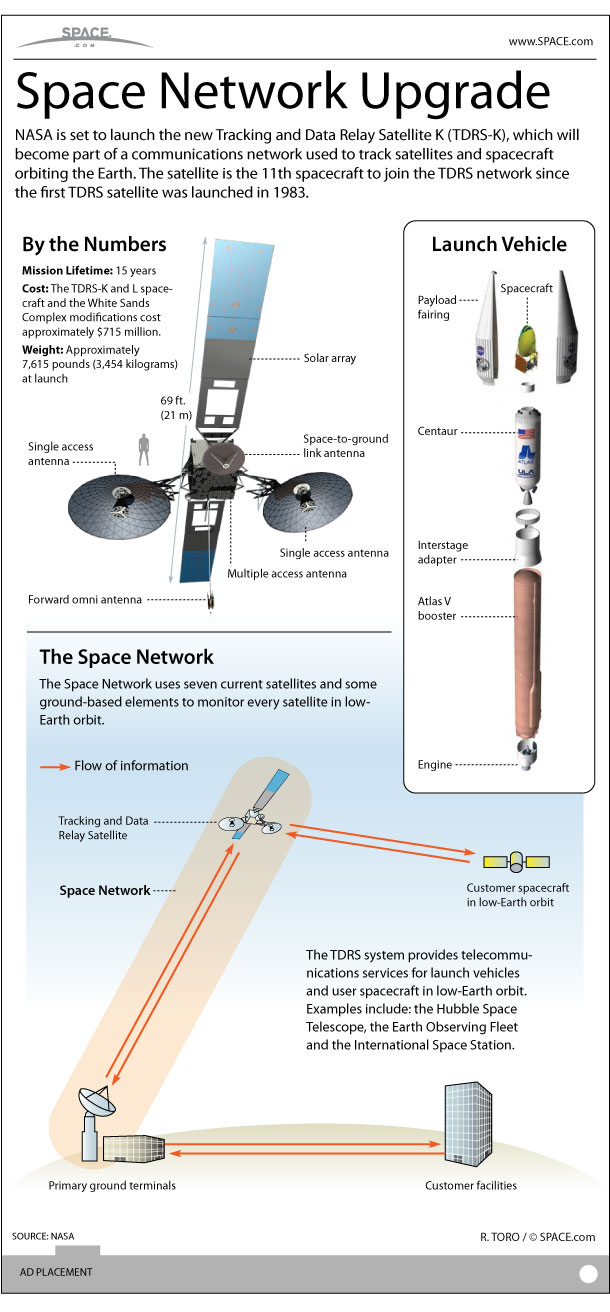How NASA's Communications Satellite Net Works (Infographic)

Since 1983, NASA has relied on a network of vital communications satellites in orbit to provide constant contact with satellites and spacecraft orbiting the Earth. This satellite network, made up of Tracking and Data Relay Satellites (TDRS), is vital to the space agency's ongoing missions to study the Earth and universe from space. See how the TDRS communications network, and its newest member the TDRS-K satellite, work in the SPACE.com infographic above.
NASA's first TDRS satellite launched in 1983, with 10 more to follow through 2013. In January 2013, the newest member of the fleet — the TDRS-K satellite — will join the comsat constellation in orbit. While 11 satellites will have been launched in all, there are only seven satellites in use at any given time, according to NASA. [NASA's New Comsat: TDRS-K Spacecraft in Photos]
The satellites rely on multiple antennas in order to receive and relay data and signals from satellites and spacecraft in orbit to ground stations on Earth. In addition to Earth-orbiting satellites, spacecraft such as the International Space Station and NASA's now-retired space shuttles relied on the TDRS network to stay in contact with Mission Control stations on Earth.
- NASA Readies Addition To Fleet Of Communication Satellites | Video
- Telstar 1 in Pictures: Legacy of 1st TV Communications Satellite
- Satellite Quiz: How Well Do You Know What's Orbiting Earth?
Follow SPACE.com on Twitter @Spacedotcom. We're also on Facebook & Google+.
Join our Space Forums to keep talking space on the latest missions, night sky and more! And if you have a news tip, correction or comment, let us know at: community@space.com.
Get the Space.com Newsletter
Breaking space news, the latest updates on rocket launches, skywatching events and more!
